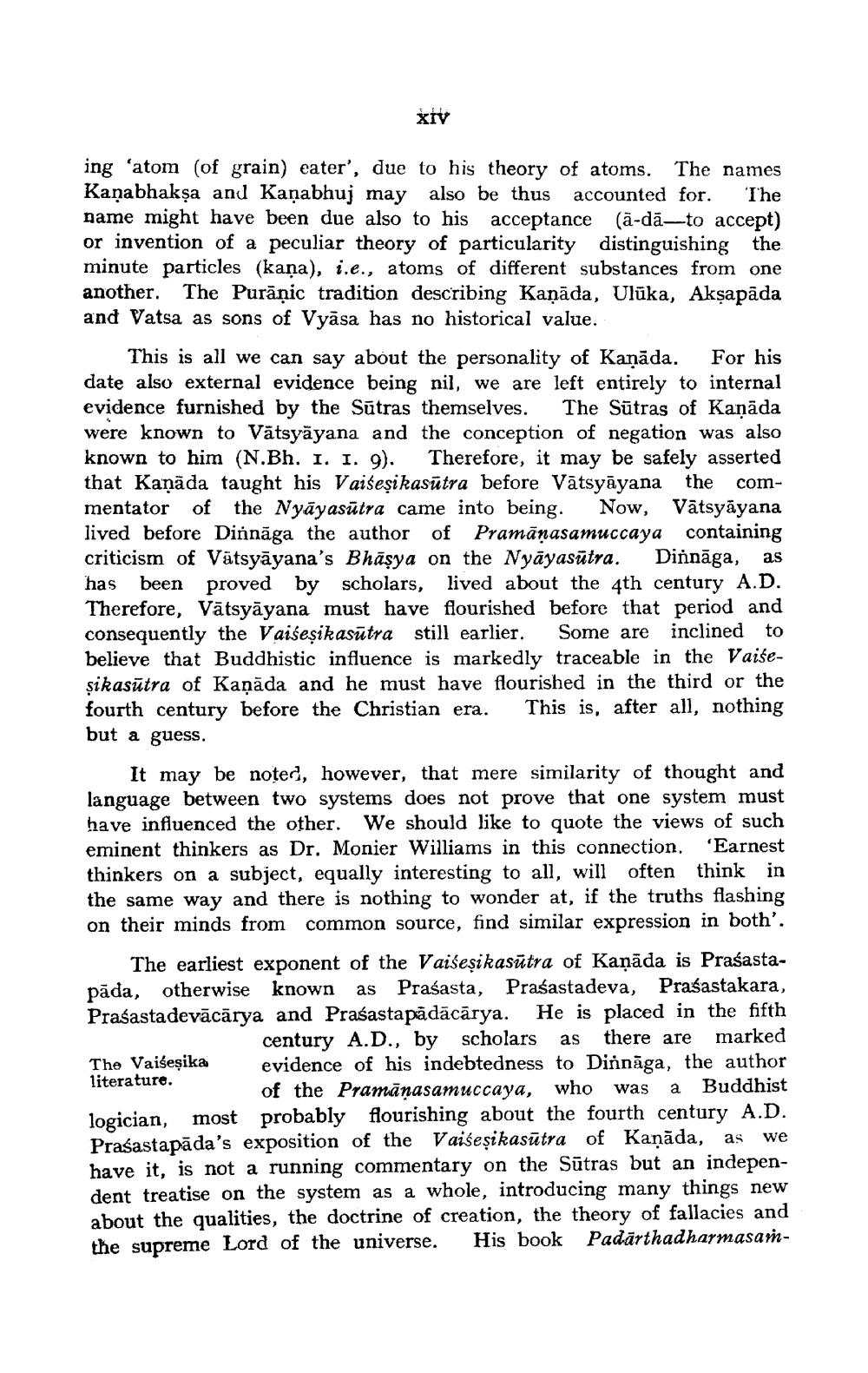________________
XIY
ing'atom (of grain) eater', due to his theory of atoms. The names Kanabhaksa and Kanabhuj may also be thus accounted for. The name might have been due also to his acceptance (ā-dā—to accept) or invention of a peculiar theory of particularity distinguishing the minute particles (kana), i.e., atoms of different substances from one another. The Purāņic tradition describing Kanāda, Ulūka, Akşapāda and Vatsa as sons of Vyāsa has no historical value.
This is all we can say about the personality of Kanāda. For his date also external evidence being nil, we are left entirely to internal evidence furnished by the Sūtras themselves. The Sūtras of Kanāda were known to Vätsyāyana and the conception of negation was also known to him (N.Bh. I. I. 9). Therefore, it may be safely asserted that Kanāda taught his Vaišeşi kasutra before Vatsyāyana the commentator of the Nyāyasūtra came into being. Now, Vātsyāyana lived before Dinnāga the author of Pramānasamuccaya containing criticism of Vätsyāyana's Bhāsya on the Nyāyasūtra. Dinnāga, as has been proved by scholars, lived about the 4th century A.D. Therefore, Vātsyāyana must have flourished before that period and consequently the Vaiseșikasūtra still earlier. Some are inclined to believe that Buddhistic influence is markedly traceable in the Vaiseşikasūtra of Kanada and he must have flourished in the third or the fourth century before the Christian era. This is, after all, nothing but a guess.
It may be noted, however, that mere similarity of thought and language between two systems does not prove that one system must have influenced the other. We should like to quote the views of such eminent thinkers as Dr. Monier Williams in this connection, 'Earnest thinkers on a subject, equally interesting to all, will often think in the same way and there is nothing to wonder at, if the truths flashing on their minds from common source, find similar expression in both'.
The earliest exponent of the Vaiseșikasūtra of Kaņāda is Prasastapāda, otherwise known as Prasasta, Prasastadeva, Praśastakara, Prasastadevācārya and Prasastapādācārya. He is placed in the fifth
century A.D., by scholars as there are marked The Vaiseșika evidence of his indebtedness to Dinnāga, the author literature.
of the Pramānasamuccaya, who was a Buddhist logician, most probably flourishing about the fourth century A.D. Prasastapāda's exposition of the Vaiseșikasūtra of Kanāda, as we have it, is not a running commentary on the Sūtras but an independent treatise on the system as a whole, introducing many things new about the qualities, the doctrine of creation, the theory of fallacies and the supreme Lord of the universe. His book Padārthadharmasam




